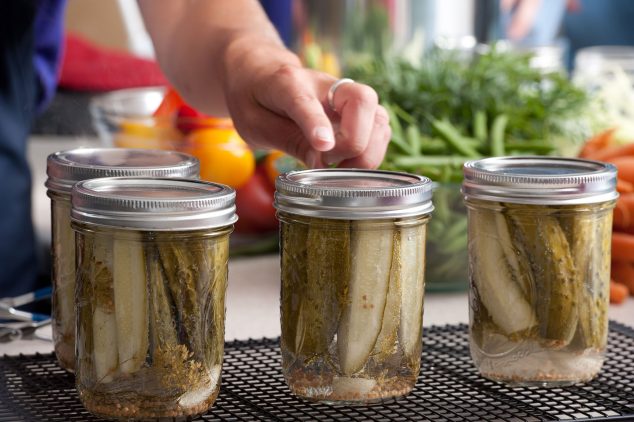
Episode 8: What to Do With Your Harvest
In this edition of Victory Garden for ME, learn about best practices for preserving your fresh produce, how to process high and low-acid foods, simple and low-tech preservation techniques, root cellaring, putting your gardens to bed in the fall, and much more!
Helpful Tips and Resources:
Throughout the season keep these Five Steps to Food Safe Fruit and Vegetable Gardening
Freezing is an easy and economical way to preserve your garden harvest for later.
University of Maine Cooperative Extension Let’s Preserve Series, which includes 17 fact sheets on canning, drying, and freezing fruits and vegetables, with recipes.
Pressure Gauge testing services are available from the UMaine Extension.
Dehydration of fruits, vegetables, and herbs is an option covered in a series of videos.
Fermentation is another low-tech way to preserve your garden produce.
Proper harvesting and handling of produce is the first step. Then proper good storage conditions will maximize the shelf life of the harvest.
A root cellar is a great way to extend the life of garden vegetables without much input. The big thing you need to know is that different crops have different temperature and humidity requirements to avoid spoilage.
For food safety reasons, fall is always the best time to apply manure if you have some available and do other soil amendments.
In the fall, garlic is planted before the ground freezes but not so early that they begin to grow green shoots.
Preservation Recipes:
It’s really important to follow a tested recipe for boiling water bath canning from a trusted source, like any from Cooperative Extension, USDA, or Ball. While your favorite food blog or YouTube channel might have a delicious-sounding recipe, you really want to be sure the recipe has been tested for safety, so that you can enjoy your home-canned goods with confidence.
University of Georgia So Easy to Preserve (6th edition) is available from the National Center for Home Food Preservation.
USDA Complete Guide to Home Canning (2015) is available as a PDF from the National Center for Home Food Preservation.
Ball Blue Book, 2015 or later
More information is available on University of Maine Cooperative Extension Food Preservation website. Please be sure to check out our next video on pain free gardening!
